Below is the evolution of all of the Fujifilm FinePix series of CZK:
- Fujifilm FinePix S1 Pro - january 2000, based on the film Nikon F60 (aka Nikon N60), the first generation SuperCCD.
- Fujifilm FinePix S2 Pro - january 2002, based on the film Nikon F80 (aka Nikon N80), SuperCCD III (the matrix third generation).
- Fujifilm FinePix S3 Pro - february 2004, on the base Fujifilm FinePix S2 ProSuperCCD SR II matrix (second generation SR matrix)
- Fujifilm FinePix S3 Pro UVIR - August 2006, upgraded Fujifilm FinePix S3 Pro for shooting in IR (Infra Red) and UV (Ultra Violet) spectra.
- Fujifilm FinePix S5 Pro - september 2006, on the base Nikon D200, slightly upgraded SuperCCD SR II matrix (similar to the one installed on Fujifilm FinePix S3 Pro).
- Fujifilm FinePix IS Pro - June 2007modernized Fujifilm FinePix S5 Pro for shooting in IR (Infra Red) and UV (Ultra Violet) spectra.
The Fujifilm FinePix S5 Pro is an amazing camera. You take it in your hands, and you understand what it is Nikon D200, only labeled 'Fujifilm Super CCD' and 'Nikon F mount'. Fujifilm FinePix S5 Pro body completely copied from the camera Nikon D200... Fujifilm FinePix S5 Pro uses Nikkor lenses compatible with Nikon F-mount (cameras have the same bayonet mount), as well as all other peripherals - flashes, butblocks, remote controls, and more.
The Fujifilm FinePix S5 Pro has another modification called Fujifilm FinePix IS Pro, designed to work in the infrared and ultraviolet spectra. In the spring and summer of 2007, when the camera became available for orders and pre-orders, the price of the S5 Pro was $ 2.000, which somehow hints at its capabilities.
Important: Fujifilm FinePix S5 Pro is not a clone Nikon D200. Fujifilm FinePix S5 Pro and Nikon D200 - completely different sensors (matrices) that create an image and a radically different menu. There are other minor differences as well.
Main differences from Nikon D200
- Different batteries (not interchangeable).
- A completely different menu. Important: S5 Pro does not have Russian language.
- Fujifilm FinePix S5 Pro Live View
- The Fujifilm FinePix S5 Pro has the ability to view the number of frames taken by the camera for its entire life through the menu. Have Nikon D200 there is no such function, in order to see the number of frames captured by a camera in a lifetime, you need to use a special program and watch the frame counter in EXIF module of any photograph taken with Nikon D200. To see the mileage S5 Pro, just go to the menu 'SETUP->Maintenance->Maintenance Counter' where the camera mileage and even the number of shutter replacements will be indicated.
- The cameras are different frame buffer. About this is separately written below.
- Different maximum shooting speed (5 fps Nikon D200, versus 1.5-3 fps for the S5 Pro).
- Different ISO limit (3200 S5 Pro vs 1600 D200), although Nikon D200 reaches ISO 3200 in Hi1 mode.
- Different image quality.
- The S5 Pro has an image processing menu. The D200 is sorely lacking a post-processing menu.
- There is no Basic compression mode for JPEG.
Important about batteries:
- Fujifilm FinePix S5 Pro battery can be used with cameras without problems Nikon D100, D70, D70s, D50. Camera data use battery Nikon EN-EL3which does not have a programmable chip.
- Accumulators Nikon EN-EL3e и Nikon EN-EL3 Cannot be used in Fujifilm FinePix S5 Pro. That is, batteries from Nikon D200, D300, D300s, D700, D80, D90 (Nikon EN-EL3e) and Nikon D100, D70, D70s, D50 (Nikon EN-EL3) are not suitable for use with Fujifilm FinePix S5 Pro.
- The Fujifilm NP-150 battery cannot be used with D200 cameras, D300, D300s, D700, D80, D90. Although outwardly these batteries are identical.
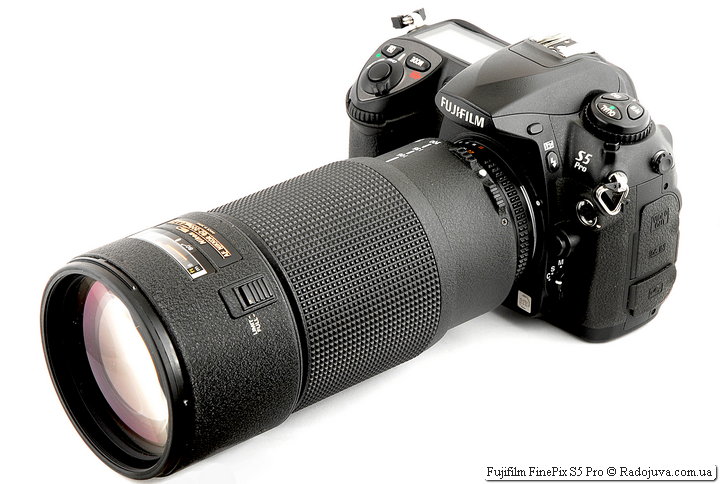
Fujifilm FinePix S5 Pro with lens Nikon ED AF Nikkor 80-200mm 1: 2.8D (MKII)
The most important
Fujifilm FinePix S5 Pro can use film simulation modes. In fact, it always shoots with certain settings for film simulation.
There are 6 simulation modes (Film Sumulation) available in the camera menu:
- STD is a standard mode suitable for a very wide variety of scenes, including portrait and landscape photography. Unlike all other simulation modes, it allows you to adjust not only the color (Color), contrast (Tone) and sharpness (Sharpness), but also the dynamic range (D-Range).
- F1 is a film simulation mode specially designed for studio portraits. Simulates working with professional negatives. Primarily suppresses flares and flares from studio flashes in the maximum brightness zone. Does not tint the image (that is, the essence of the simulation is in a good study of the highlights).
- F1a is the same mode as F1, but with slightly raised chroma.
- F1b - conveys skin tone (facial skin tone) with smooth transitions. Also, this mode captures vivid natural colors and is great for outdoor portraits.
- F1c is the same mode as F1, but sharpened.
- F2 is a high saturation mode similar to FUJI-CHROME slides. Great for landscapes or architecture.
Additionally, in almost every mode F1, F1a, F1b, F1c, F2, you can adjust the color, contrast and sharpness, but only in a certain range of values.
Below is a diagram with the evolution of Super CCD matrices:
Critical: only native utility works best with RAW files Fujifilm Hyper-Utility HS-V3. Third party converters have a number of limitations and do not fully understand the complex structure of the SuperCCD SR / SR II sensor. Of the third-party converters, in my experience, Adobe LightRoom works best.
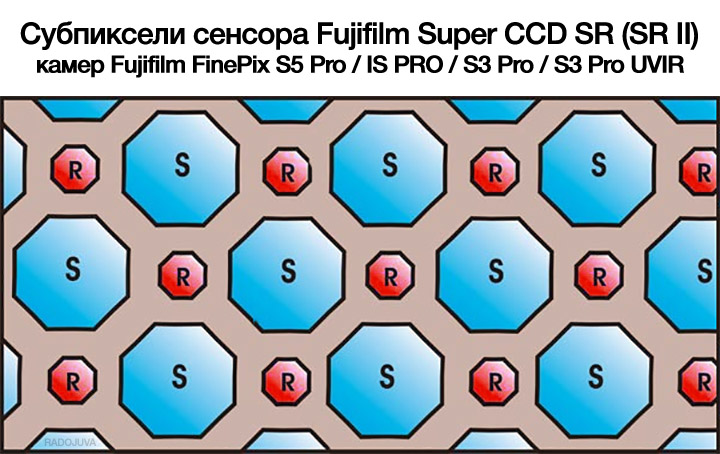
S-pixels have the usual sensitivity of the classic pixels / subpixels CCD matrices. R-pixels are smaller and less sensitive to light than S-pixels and are designed to capture details in bright areas of the frame. During shooting, the camera's processor combines data from these two types of photodiodes to obtain a wide dynamic range. Also pay attention to the complex polygonal structure of the sensor (somewhat similar to the structure of a honeycomb). Actually - this picture is the 'essence' of the S5 Pro camera.
I am very pleased that the Fujifilm FinePix S5 Pro pays a lot of attention to portraiture and skin tone. Perhaps, every camera should have such functions.
![Fujifilm FinePix S5 Pro with Tamron SP AF Aspherical XR Di LD [IF] 28-75mm 1: 2.8 Macro A09 (Model A09N & Model A09N II) Fujifilm FinePix S5 Pro with Tamron SP AF Aspherical XR Di LD [IF] 28-75mm 1: 2.8 Macro A09 (Model A09N & Model A09N II)](https://radojuva.com/wp-content/uploads/2012/05/fujifilm-finepix-s5-pro-camera-review-1.jpg)
Fujifilm FinePix S5 Pro c Tamron SP AF Aspherical XR Di LD [IF] 28-75mm 1: 2.8 Macro A09 (Model A09N & Model A09N II)
live view
Live View (live view / screen) is present in the camera, but has a number of features:
- In Live View mode, the images themselves slow down when sighted, like video recording on older phones. It seems that the frequency of image display in Live View is about 10-15 frames per second.
- In Live View, two methods are available: black and white and color.
- Live View does not support auto focus. In general, in order to focus through Live View on a number of non-motorized lenses, you need to switch the camera to manual focusing “M”, and on lenses with a motor, switch to M or (M / A) mode.
- Live View only turns on for 30 seconds. When Live View is on, you see a timer that counts down from 30 seconds to one second, after which Live View automatically turns off. For thoughtful focusing personally, 30 seconds may not be enough for me.
- When Live View is on, the PC link indicator blinks. Typically this indicator on the Nikon D200 shows the actual computer-to-camera relationship.
- And the most annoying thing in Live View mode is that when you press the shutter button, the camera does not take a picture. You must first manually turn off Live View, or wait for it to turn off automatically after 30 seconds, and only after that - take a picture. When you focus with your left hand using the focus ring on the lens, and then move your hand to the Live View off button in order to take a picture, the focus is lost, it is very annoying.
Important: mode live view It turns on very quickly with just one button. To turn it on, just hold the bottom button for a couple of seconds in the vertical row of buttons to the left of the display (button with a magnifying glass and a man).
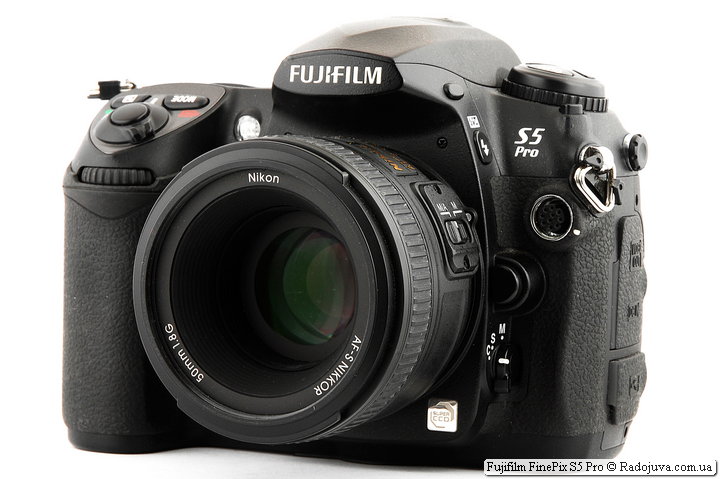
Fujifilm FinePix S5 Pro with lens Nikon AF-S Nikkor 50mm 1: 1.8G SWM Aspherical
My personal opinion is that the Live View limitation of 30 seconds is an imprint of the mechanics and electronics of the shutter from the D200, which 30 seconds is simply the longest manually set excerpt... The Fujifilm FinePix S5 Pro most likely had to adjust to the mechanics and part of the electronics of the Nikon D200 itself. As a result, the Live View function is very poorly implemented and rather difficult to use. But for manual optics it is undoubtedly a godsend.
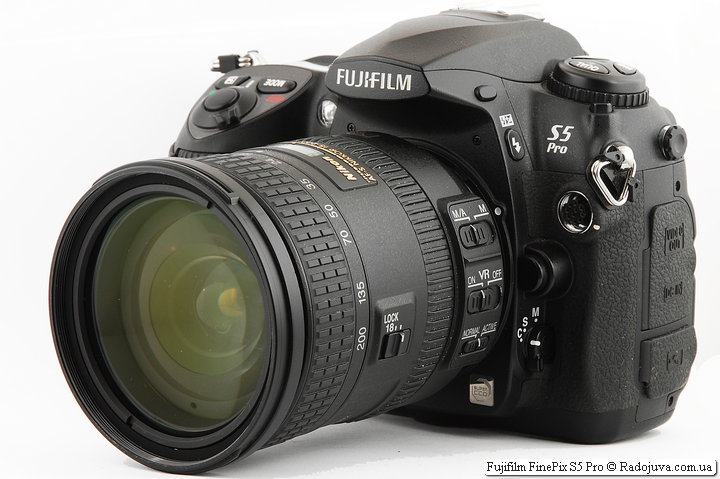
S5 Pro with lens Nikon DX AF-S Nikkor 18-200mm 1: 3.5-5.6GII ED SWM VR IF Aspherical
The Fujifilm FinePix S5 Pro camera is very easy to operate. Ergonomics are great, after you shoot with the D200 and then take the S5 Pro in your hands - you don't feel any difference, except in the image quality and at a slightly slower speed during continuous shooting.
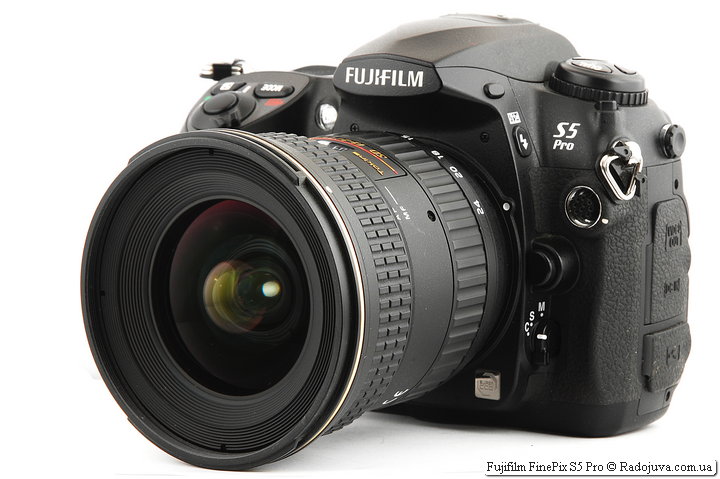
S5 PRO with lens Tokina AT-X Pro SD 12-24 F4 (IF) DX II 124
The camera accepted from its parent all the basic properties:
- Shutter with minimum shutter speed 1 \ 8000 seconds (new Nikon D750 because it can’t!)
- Command mode flash control with Nikon CLS
- Fast flash sync Nikon FP
- The same focus module on 11 points (Multi-cam 1000)
- Same 1005-segment metering sensor
- Same built-in focus motor for working with optics type 'AF'-type
- Diaphragm rheostat for working with old manual optics
- Large monochrome display for quick setup of basic parameters
- Large and reliable memory cards CF
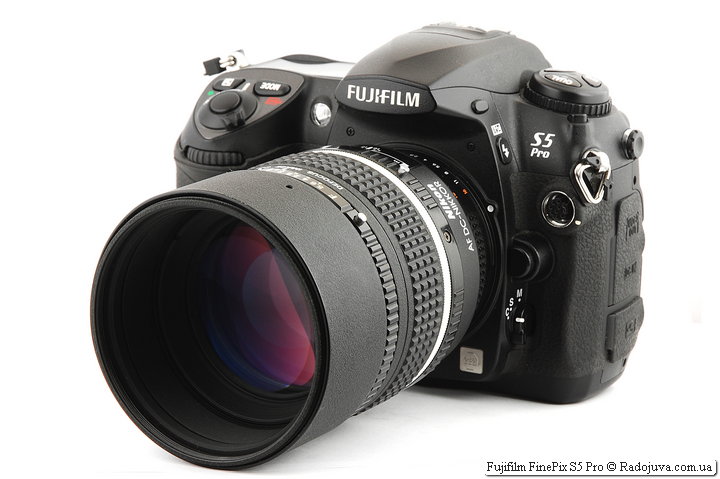
Fujifilm FinePix S5 Pro with lens Nikon AF DC-Nikkor 105mm 1: 2 D Defocus Image Control
What is special about the S5 Pro?
The main feature of the S5 Pro camera is high dynamic range and a colorful picture (this is my only review where I mention the phrase "colorful picture"). The dynamic range of the Fujifilm FinePix S5 Pro is 200 stops higher than that of the Nikon D2 (4 times, 11.5EV vs 13.5EV).
The dynamic range of the Fujifilm FinePix S5 Pro is even higher than Nikon's top cameras: D5, D4/D4s, D3/D3s, D2X/D2Xs, D2H/D2Hs and Canon: 1DX, 1Ds/1Ds Mark II/1Ds Mark III, 1D Mark II /1D Mark II N/1D Mark III/1D Mark IV etc. (by the way, interesting stuff about dynamic range data with photonstophotos and dxo is here).
Actually, after the comfortable ergonomics, the high dynamic range is one of the strongest points of the S5 Pro.
Fujifilm FinePix S5 Pro uses Fujifilm SuperCCD SR II sensor (second generation Fujifilm SuperCCD SR sensor, also sometimes called Fujifilm Super CCD SR PRO), which includes two types of pixels (diodes): S-pixels in the amount of 6.17 MP, and R-pixels in the amount of 6.17 MP. In addition, these pixels have a specific orientation and position on the sensor. Different pixels have different sensitivity to light and allow you to work well in shadows and highlights, thus achieving a large dynamic range. The principle of operation of SuperCCD SR II is described in another my review of S5 Pro here.
In fact, 12.1 (12.3) megapixels in JPEG mode are 'bloated' interpolation. But still, I am of the opinion that the S5 Pro still has 12 MP, albeit with some reservations.
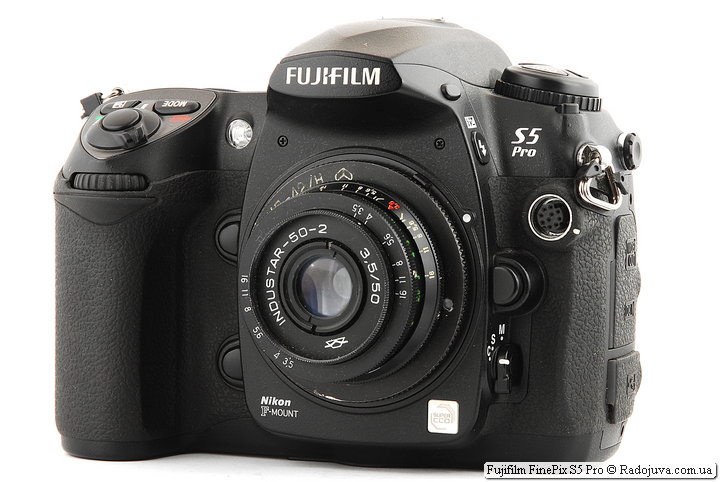
S5 PRO with lens Industar-50-2 3,5 / 50
Speed and frame buffer
S5 PRO, unlike Nikon D200, can shoot at a maximum speed of 3 frames per second.
Attention: to get camera speed 3 fps, be sure to use STD Film Simulation and be sure to turn D-Range to 100% (STD). In this mode, only S-pixels of the matrix will work, and RAW files will weigh only 12 MB. And only in this mode the Seutp-> Shooting-> Shooting Speed: 2 fps function works correctly, which sets the shooting speed in CL mode.
Important: in all other film simulation modes, or in STD mode, but with a D-range of 130% or higher, the maximum burst speed will be 1.5 frames per second.
- 19 frames RAW at D-RANGE 100% STD (very, very good, more than Nikon D750!)
- 16 frames in RAW + JPEG or JPEG format with any quality setting at D-RANGE 100% STD
- 9 frames RAW at w2 (8 at IMAGE DISPLAY-> ON)
- 8 frames in RAW + JPEG or JPEG format with any quality setting at w2 (7 with IMAGE DISPLAY-> ON)
- about 1 RAW files can be obtained in 30 minute of shooting (at w2, ISO <= 640, IMAGE DISPLAY-> OFF)
- for 1 minute of shooting, you can get about 70 JPEG L FINE files (at w2, ISO <= 640, IMAGE DISPLAY-> OFF)
- about 1 RAW files can be obtained in 25 minute of shooting (at w2, ISO <= 640, IMAGE DISPLAY-> 2 sec)
- for 1 minute of shooting, you can get about 30 JPEG files (at w2, ISO <= 640, IMAGE DISPLAY-> 2 sec)
- in 1 minute of shooting, you can get about 18 RAW + JPEG L FINE files (at w2, ISO 1000, IMAGE DISPLAY-> 2 sec)
UPDATE: critical... Function 'SETUP-> DISPLAY-> IMAGE DISPLAY-> OFF' adds 1 frame RAW or JPEG with extended D-Range to the buffer.
Critical... If the 'SETUP -> DISPLAY -> IMAGE DISPLAY' function is set to 'CONTINUOS', or '4 SEC, or' 2 SEC ', then the camera very slowly writes the footage to the memory card. The recording speed does not depend on the memory card bandwidth. Even if you use the fastest CF memory card, the data recording speed will not change. Most likely the problem is that after recording each frame, the camera spends time reading it again and displaying it on the display, which significantly increases the time it takes to record the remaining frames from the frame buffer queue. Once the frame buffer is full, one picture is recorded for 2.5 secondseven if it is a small size 'S' JPEG with medium quality 'NORM'. This function can be disabled and the duration of the frame sequence can be significantly increased. If you use this recommendation, then in 1 minute of shooting, the S5 Pro can take about 70 JPEG L FINE pictures (at w2 and ISO <= 640)... Details here.
Please note that changing the size of the recorded JPEG file (L, M, S) or its quality (Fine, Norm), as well as changing the settings of the noise reduction function does not affect the number of frames in the buffer. After the buffer is full, the camera stops shooting and waits for data to be written to the memory card.... During this time, you cannot view the footage or adjust the menu. The next frame can be taken immediately after recording at least one file from the frame buffer to the memory card. You can view the filmed material or enter the menu only after the buffer has been completely cleared.
Camera RAW files with D-range 130% and higher at ISO 100-1000 use 14-bit color depth, are recorded without compression and weigh 25 MB (!). The same Nikon D200 could only afford 12 bit color depth. Perhaps this is the reason for the low speed of the camera. Nikon only switched to 14-bit color depth in 2007 with the release of the Nikon D3 / D300.
UPDATE: Critical (updated 04.02.2022/XNUMX/XNUMX). When using ISO 1250 and above, at a D-range value of 130-400%, only S-pixels (only half of the sensor) will still work, and the maximum burst speed will increase to 3 fps. Due to the fact that R-pixels will not work, there will be no significant increase in dynamic range at D-range 130-400% and ISO 1250-3200. In this case, the RAW file size at ISO 1250-3200 will be half the size of the RAW file at ISO 100-1250 when using D-range 130-400% . This situation is discussed, for example, here. The instructions for this say like this. To summarize, large D-ragne values of 130-400% have a physical justification only at ISO 100-1250 values.
UPDATE: critical... When using ISO 800 and higher, additional forced noise reduction is enabled, which results in slower recording of pictures to the memory card (pictures undergo additional noise reduction processing before recording). This results in shorter burst times at ISO <= 640 and at ISO> = 800.
Rumor has it that due to the fact that the Fujifilm FinePix S5 Pro shutter is taken from the Nikon D200, which is designed to work at a speed of 5 fps, shooting at a speed of 1.5 fps, the Fujifilm FinePix S5 Pro shutter lasts much longer than on Nikon D200.
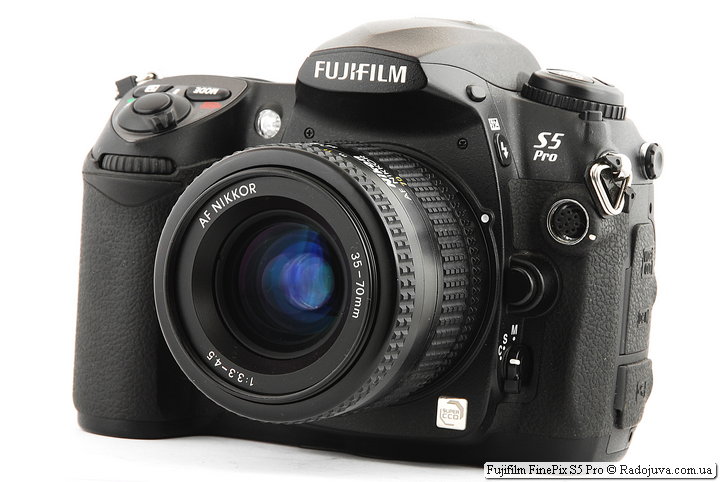
Fujifilm FinePix S5 Pro with a lens Nikon AF Nikkor 35-70mm 1: 3.3-4.5 (MKII)
Sample photos on Fujifilm FinePix S5 Pro (different lenses)
Below are sample photos on the Fujifilm FinePix S5 Pro, shot with different lenses.
Fujifilm S5 Pro + Sigma 135 / 1.8 Art = Dream Team!
Shown below are images with Fujifilm FinePix S5 Pro and lens Sigma 135mm 1: 1.8 DG A [for Nikon F mount]. JPEG from camera, no processing. Everything was filmed at F / 1.8 - only hardcore and positive emotions.
Original photos in JPEG format ('.jpg') can be at this link (164 photos, 800 MB). These photos were prepared for notes on NikonRumors.
Sample photos on Fujifilm FinePix S5 Pro + Tokina 12-24 / 4 and Nikon 50 / 1.8G
In 2021, I was on vacation, shot a little with Fujifilm FinePix S5 Pro paired with good lenses Tokina AT-X 124 Pro SD 12-24 F4 (IF) DX II Aspherical и Nikon AF-S Nikkor 50mm 1: 1.8G SWM Aspherical, some photos were taken using a polarizing filter CITIWIDE CPL 77 mm (for Tokina) and Hoya 58mm PL-CIR... (for Nikon). JPEG everywhere straight from the camera, but some photos were cleaned of 'spots' due to a dirty sensor.
Original photos in JPEG format ('.jpg') can be view / download from this link (gallery on GOOGLE DRIVE, 50+ photos).
Original photos in format RAW ('.RAF') can view / download from this link (gallery on GOOGLE DRIVE, 40+ photos). The same photos can be found here, here и here.
Many examples of photos with RAW source files can be found in the following reviews.
- Sigma 135mm 1: 1.8 DG A (ART) [there is a working link to the original JPEGs in the review]
- SIGMA ZOOM 18-50mm 1: 2.8-4.5 DC OS HSM Optical Stabilizer [there is a working link to the original JPEGs in the review]
- YONGNUO 35mm 1: 2 (YN35mm F2N) [there is a working link to the original JPEGs in the review]
- Tamron SP AF LD 70-210mm 1: 2.8 67DN [there is a working link to the original JPEGs in the review]
- Nippon Kogaku Japan Nikkor-S Auto 1: 1.2 f = 55mm [there is a working link to the original JPEGs in the review]
- Nikon DX AF-S Nikkor 12-24mm 1: 4G ED SWM IF Aspherical [in this and all reviews below, original RAW / JPEGs are lost, but RAW files can be found here]
- Tokina AT-X PRO SD 50-135 F2.8 DX N / AIS
- Nikon DX AF-S Nikkor 16-85mm 1: 3.5-5.6G ED VR SWM IF Aspherical
- Sigma EX 85mm 1: 1.4 DG HSM
- Nikon DX AF-S Nikkor 18-200mm 1: 3.5-5.6G ED SWM VR IF Aspherical
- Nikon AF Nikkor 28-85mm 1: 3.5-4.5 (MKII)
- Nikon N AF-S Nikkor 70-200mm 1: 4G ED SWM VR IF Nano Crystal Coat
- Samyang 8mm 1: 3.5 UMC FISH-EYE CS II Aspherical NI
- Nikon ED AF Nikkor 70-300mm 1: 4-5.6D
- Voigtlander APO-Lanthar 90mm F3.5 SL N / AI-S
- Nikon ED AF VR-Nikkor 80-400mm 1: 4.5-5.6D Vibration Reduction
- Nikon DX AF-S Nikkor 10-24mm 1: 3.5-4.5G ED SWM IF Aspherical
- Tokina AT-X PRO 80-200mm 1: 2.8
- Sigma 50-500mm 1: 4-6.3D HSM EX APO
- Nikon AF Nikkor 28mm 1: 2.8 (MKII)
- Quantaray AF LD 55-200mm 1: 4-5.6 Macro
- Nikon AF Nikkor 20mm 1: 2.8D
- A small interesting video on the topic here
- And an interview with me about Fujifilm FinePix S5 Pro here
You can also find my photos with Fujifilm FinePix S5 Pro at the links:
- 29/06/2021 (Tokina 12-24 / 4 II, Nikon 50 / 1.8G, landscapes), they are on FB и VK
- 30/06/2021 (Tokina 12-24 / 4 II, Nikon 50 / 1.8G, landscapes), they are on FB и VK
- 02-07-2021 (Tokina 12-24 / 4 II, Nikon 50 / 1.8G, portraits), they are on FB и VK
- 04-07-2021 (Sigma 135 / 1.8 Art, miscellaneous)
- 06-07-2021 (Tamron 70-210 / 2.8, summer warm sketches), they are on FB и VK
- 07-07-2021 (Nikon 50 / 1.8G, summer sketches with polaric), they are on FB и VK
- 08-07-2021 (summer sketches), they are on FB, VK, inst
- 13-07-2021 (summer sketches, Nikon 50 / 1.8G + macro rings), they are on FB и VK and inst
- 14-07-2021 (note about Nikon D40 + S5 Pro)
- 16-07-2021 (summer sketches, highlights), they are in inst
- 24-07-2021 (flowers on Meike 85mm 1: 1.8 AF)
- 14-08-2021 (portraits at Nippon Kogaku Japan Nikkor-S Auto 1: 1.2 f = 55mm), FB, VK, inst
- My gallery at 500PX
Personal experience:
The Fujifilm FinePix S5 Pro is my soul camera and has the nicest color I've ever shot. And I shot with almost all Nikon and Canon cameras and many others. The Fujifilm FinePix S5 Pro can only compete in color reproduction pleasantness Fujifilm FinePix S3 Pro.
No matter how much I shoot, I still come to the conclusion that the number of particularly successful shots in color with the Fujifilm FinePix S5 Pro is the highest. But do not think that the Fujifilm FinePix S5 Pro immediately makes masterpieces. The Fujifilm FinePix S5 Pro is a rather capricious and difficult camera to understand. Its potential is only available to advanced users.
Fujifilm FinePix S5 Pro - this is exactly the conversation about the sensor Fujifilm SuperCCD SR PRO / Fujifilm SuperCCD SR II, with all the pros and cons.
A worthy Fujifilm SuperCCD SR II sensor
- Sufficiently high dynamic range (due to the combination of R and S pixels).
- Good / excellent / peculiar color rendition inherent in many cameras based on CCD sensors
- Fairly flexible RAW (.'RAF '), especially for' pulling highlights'. 14-bit color depth (rare for APS-C CCD sensors) + data storage without compression and loss
Disadvantages of Fujifilm SuperCCD SR II sensor
- Small detail due to interpolation. At best, we can talk about 'honest' 6-8-10 MP, but not about 12 MP
- Detailing is lame due to thick anti-moor filter (need 'sharp lenses' to maximize sensor capabilities)
- High noise level at high ISO
- Wide dynamic range is only available at ISO values of 100 to 1000 (at ISO 1250, R-subpixels are automatically disabled)
- Diagonal 'ladder' pixelization due to different rendering of details in the vertical/horizontal and diagonal directions, associated with a special arrangement of subpixels and interpolation (treated by shooting in 6 MP mode)
- Due to the unusual structure and arrangement of photosensitive diodes in the form of a polygonal structure, vaguely similar to silver halides in photographic film, the resulting image has its own 'character'
- Difficulty developing RAW files with third-party converters (due to the complex structure of the sensor)
- Image posterization when shooting in JPEG (treated by shooting in RAW with further conversion to TIFF)
- Pixel/subpixel burn-in over time (a common affliction in CCD sensors). Over time, the number of 'dead, broken, burnt' pixels increases significantly
- The sensor is afraid of gamma radiation, frequent flights are not recommended for the Fujifilm Super CCD SR II sensor
- Loose 'bumpy' picture with strong 'shadow pulling' from RAW or JPEG
- Noise reduction can not be turned off (even at ISO 100, even in the native converter and even when shooting in RAW)
- Yet totally a problem CCD Blooming (CCD blooming) not solved
- High power consumption of the sensor
- Rapid sensor heating when working in Live View mode. Live View works for a maximum of 30 seconds
- There is no way to easily and simply implement video shooting on this type of sensor
- High complexity and high cost of manufacturing such sensors
RAW / RAF Conversion, HYPER UTILITY HS-V3
Render original RAW files (with '.RAF' resolution) is best done with the old original utility Fuji Hyper-Utility HS-V3... For the best quality, you should configure the converter like this... This converter may not work on modern operating systems, or it will require a lot of cleaning tools to install it. The repackaged version (all unnecessary is cut out), optimized for working with Windows 7/8/10, can be download from this link... Your use of the Fujifilm Hyper Utility HS-V3 remains entirely at your own risk.
Also Adobe Lightroom and Adobe Camera Raw (a built-in plug-in in Adobe Photoshop) allow you to work well with Fujifilm FinePix S5 Pro RAW files. In my opinion, if you want to use third-party RAW converters, then the best way to use Fuji Hyper-Utility HS-V3 is to convert the original RAW files (with '.RAF' resolution) to TIFF format with 16-bit color depth ( the output should be files of 70 megabytes each), and later TIFF files should be processed by third-party converters, such as, for example, Capture One, Lightroom and any others. The TIFF format allows you to preserve the correct color rendition (which third-party converters cannot provide), 12 MP resolution and a margin of data for easy manipulation of sources.
UPDATED: A new version of the original (count 'native') FUJIFILM RAW FILE CONVERTER EX 3.0 (powered by SILKYPIX) now digests RAW files from Fujifilm FinePix S5 Pro. You can download on the official website... But it makes it noticeably worse than the original old FujiFilm Hyper-Utility HS-V3, the situation disassembled by me here.
More information about Fujifilm FinePix S5 Pro
- Review by Sergei Merkulov (2024)
- Review by Sasha Akimov (late 2022)
- Review of Fujifilm FinePix S5 Pro, 2021, Vadim Om + comments
- Stream about Fujifilm FinePix S5 Pro, 2021, Vadim Om + comments
- Fujifilm FinePix S5 Pro 2021 Full Frame Review
- Interview about Fujifilm FinePix S5 Pro, 2021, Olegasphoto + Radozhiva
- Text review Fujifilm FinePix S5 Pro, 2021, Olegasphoto
- A detailed review of the capabilities of the Fujifilm FinePix S5 Pro sensor, 2022, Dmitry Evtifeev
- An interesting feature UPGRADE Fujifilm FinePix S5 Pro
- Another review of Fujifilm FinePix S5 Pro on andrew-lazarev.com
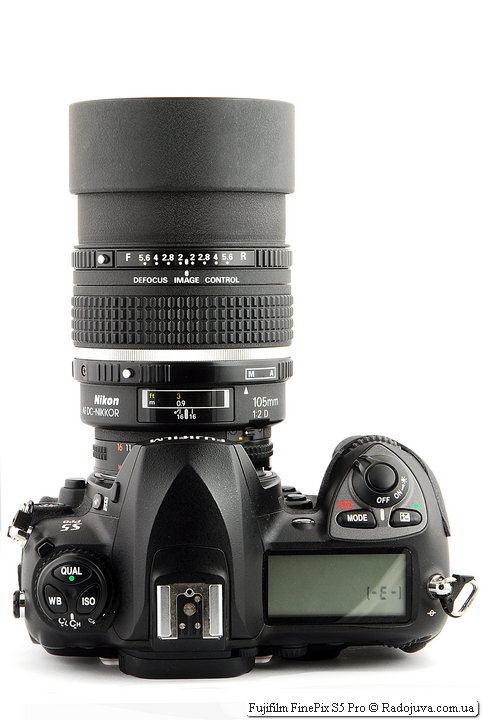
S5 Pro with lens Nikon AF DC-Nikkor 105mm 1: 2 D Defocus Image Control
All Fujifilm X APS-C Interchangeable Lens Digital Mirrorless Cameras
- X-Pro1, X-Pro2, X-Pro3
- X-T1, X-T2, X-T3, X-T4, X-T5
- X-T10, X-T20, X-T30, X-T30II
- X-S10, X-S20
- X-T100, X-T200
- X-E1, X-E2, X-E2s, X-E3, X-E4
- X-M1
- X-A1, X-A2, X-A3, X-A5, X-A7
- X-A20
- X-H1, X-H2S, X-H2
Results
Fujifilm FinePix S5 Pro - camera with excellent professional ergonomics (controls like Nikon D200). The strength of the S5 Pro is sufficiently high dynamic range and pleasant color rendering... A serious drawback of the camera is the low burst speed when using a wide dynamic range - the shooting speed is only 1.5 fps. In many things the camera very much outdated.
Personally, I find the Fujifilm FinePix S5 Pro one of the best 'for the soul' cameras (another one is Fujifilm FinePix S3 Pro). Fujifilm FinePix S5 Pro - it's a legend.
Comments on this post do not require registration. Anyone can leave a comment. Many different photographic equipment can be found on AliExpress.
Material prepared Arkady Shapoval. Training/Consultations | Youtube | Facebook | Instagram | Twitter | Telegram

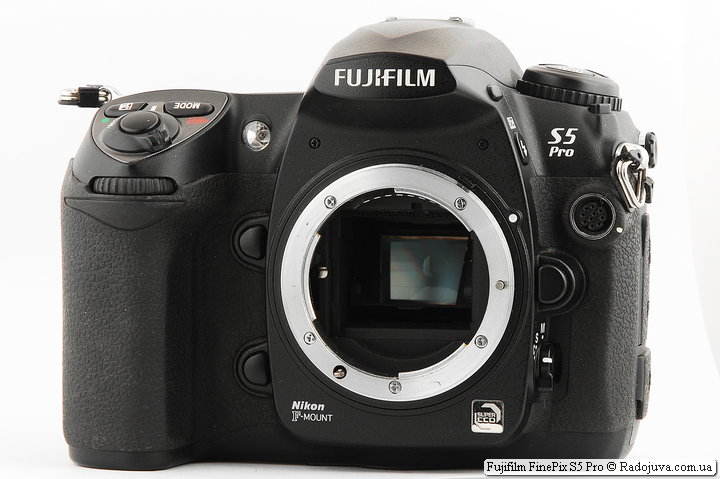
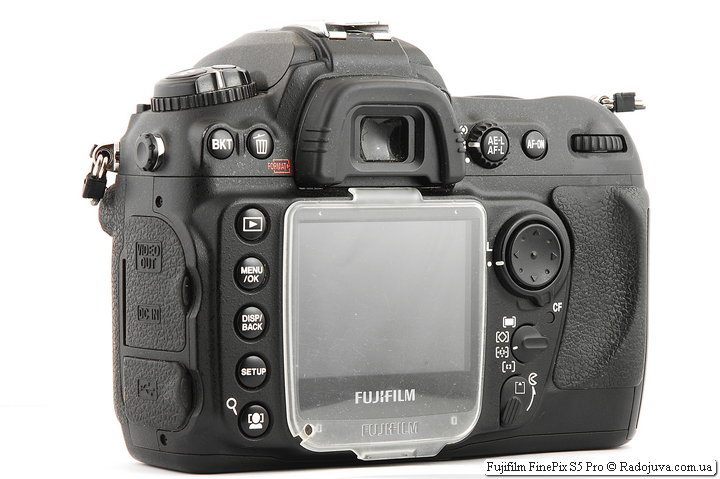
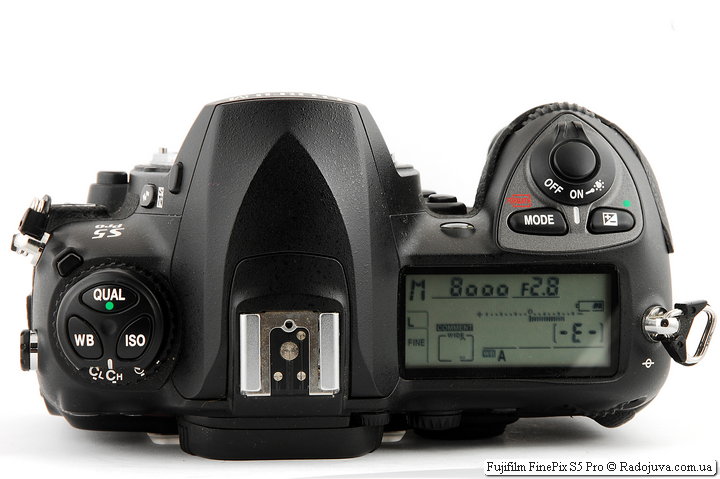















































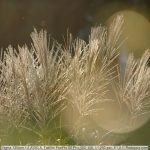

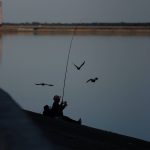

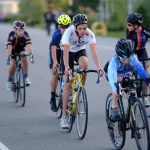







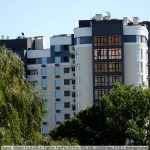
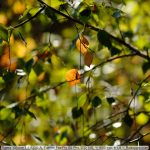
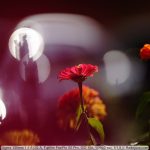





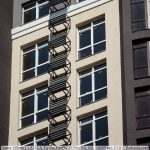
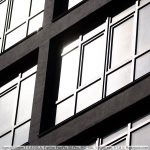





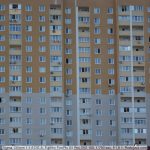

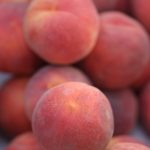

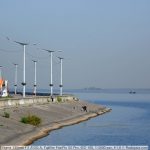




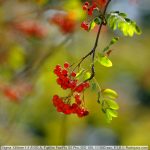
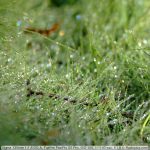
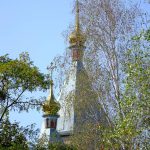
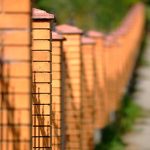
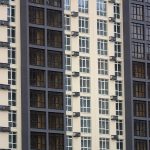


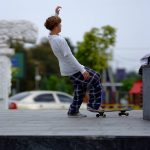
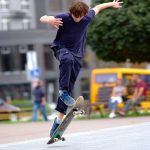
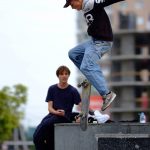
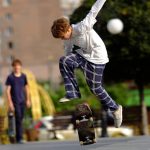
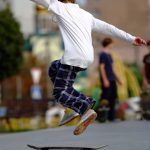

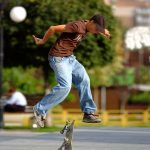
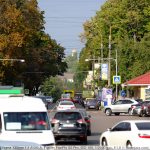
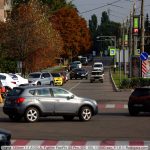









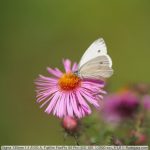

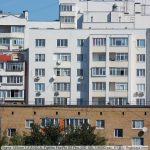





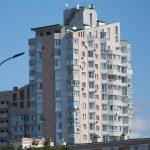





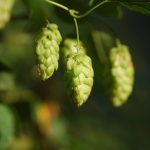
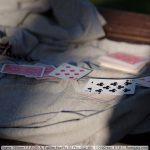


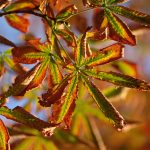

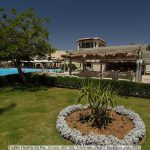
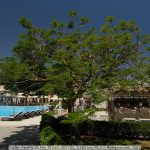









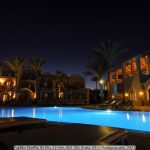

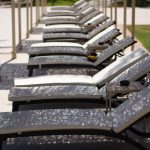
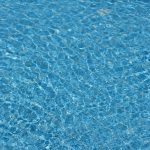


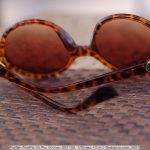




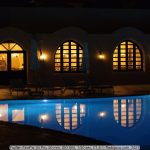


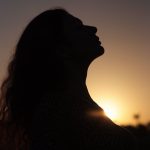

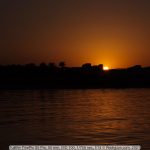





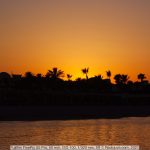




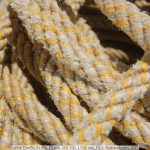
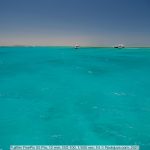
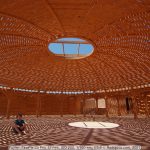

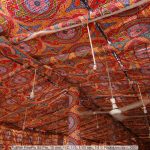



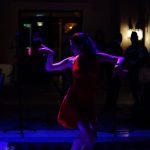








S5 Pro or 5D Classic?
In general - 5D.
youtube.com/watch?v=jpBXTtcgOcA
There was a short interview with me about the Fujifilm FinePix S5 Pro https://youtu.be/ryxWeKGlhlg
PPC. Well, olegas is of course the devil)
A review of Fujifilm FinePix S5 Pro from Oleg (Olegas) has been released, on YouTube at this link https://youtu.be/E-LZ5nqAkDc
This Oleg is a commercial photographer who doesn't care about the color rendition of the camera. The main thing for him is the convenience of controlling the camera, and the rest he will wind up in the editor ... ... Into the furnace of such photographers.
I found such a thing - RAW FILE CONVERTER EX 3.0 powered by SILKYPIX on the fuji site, I think there is the same on the site of the silkipix itself. The latest version officially supports, among other things, heaving, protrovanie, etc. If you develop a frame (as it is translated there) in the highest jpeg quality, then a photo is saved at 12.1 MP. Try whoever is interested.
Now let's take a look, their version for 2019 definitely did not know how to do this.
Good evening, Arkady, and everyone reading this blog!
Arkady, here you have admitted that the camera is difficult, capricious even for you, as a pro.
And what is left for us amateurs to do? After all, I also want to photograph with this camera.
Can you do, sketch us several options for shooting modes on the s5 pro, well, there are portraits, landscapes, streets with architecture, macro.
And we will already dance from your recommendations, maybe we will achieve more.
Please !!!
And then usually everyone is embarrassed to ask, many pretend to be a pro, they do not want to humiliate themselves.
And I think in practical application, you also need to share experience with showing practical settings in this camera, which has an English menu, which further adds to the difficulties in mastering it.
Moreover, I watched all the discussions on YouTube, it was interesting, but that comrade, like a bindyuzhny, moaned this mysterious camera, it's not beautiful.
Here you need to subtly and intelligently work on this camera and also discuss it.
That is, such people with a fine artistic streak of a photographer, like you Arkady, should continue to study it further with the provision of us to lovers of all your narobots on s5 pro.
I look forward to hearing from you and practical modes for this camera.
The modes depend on the tasks. I usually use f1b +2 0 +2 for maximum “color” and f1c +2 0 +2 for maximum “sharpness”. There are no other special tricks. You can play around with fine tuning the BB, but no more. You can get confused with RAW - how to do it is described in the same review.
It seems to me that formulations like "get confused"
only scare away photo enthusiasts.
While they should clearly understand - RAW is our everything.
Thanks Arkady!
Thanks for getting started.
In general, if you find time, please add to the review or do it separately with a link as in the Nikon D70S review - “My recommendations for setting up camera modes”.
There you very well revealed the basic recommendations for adjusting the modes of the nikon d70s camera, which also has an English menu.
When you find the time!
Are looking forward to !
Comrades S5 PRO connoisseurs.
Help educate the masses about the miracle of SUPER CCD SR.
I am looking for someone who can give Dima Evtifeev a camera for a review in St. Petersburg for a week. It's hard for me to do this from Ukraine.
He has one of the most adequate reviews on the Runet - https://evtifeev.com/
I have already agreed with him, the question is only in the cell.
Thank you.
The epic with Healing continues :)
She did go to Evtifeev, we are waiting for a good, adequate overview and expansion of the hedgehog sect
There was not a single Hearth in St. Petersburg ... Russia is impoverished.
If he has the opportunity, let him take it from the capital. Ready to give
Thanks. The camera is already moving for him.
"They've probably arrived."
No, Dmitry promises a review very soon
PS If you get Arkady, tell him what this camera is for. And then all the reviews end with weight, frame rate, shutter sound. And I forgot the ISO. And when the ISO was shot on film, they also turned up to thousandths.
And you know, I told Oleg long and tediously (in the same interview) and wrote to others. Nobody wants to listen to anything. The magic of modern ISO in a million, speeds of 120 fps (promised in the Z9) and a silent shutter eclipsed everything in the world for the public. Let's see how Dmitry copes.
he who sees let him see he who hears let the wise hear let him understand
Anonymous will write a comment!
If you are ready to endure a weight of 2 kg on your neck for the sake of one shot, look like an eccentric dinosaur in the eyes of others, squat and kneel, run around an object, then you should probably read this.
Do you like to take pictures - love and carry photographic equipment
Are there still the owners of this camera?
A question about flash drives. A friend of mine wants to know exactly what the maximum volume is supported. Will 32GB CF handle? or won't he see?
32 Gb without any problems at all, I often used such with c5
Adapters for SD / MicroSD also work fine.
Send someone a link to the legendary light bulb video.
I can't find something on youtube.
Arkady, the article is written with a lot of details. I will not even try to repeat, I will limit myself to technical points :)
Minor spelling fixes:
--------
pixelization -> pixelization
Pasteurization -> posterization. Louis Pasteur in shock :)
distant -> distant
silver halides -> silver halides
pixebay -> pixels
burnt out -> burnt out
TIFF with 16-bit color depth - the RAF file itself is 14-bit. I'm not sure that we will get a win by saving it in 16 bits and then opening it in Photoshop as 8 bits. You can immediately save in 8 bits, otherwise it will stretch from 14 to 16, and then “collapse” into 8 and there will be losses (I think so).
An article on the camera is on the way, I have already done the tests, I am writing.
Fixed
Good afternoon.
Who will tell you where to buy acb for impurity?
Finally, in 2022, a review from Dmitry Evtifeev was released - https://evtifeev.com/82262-obzor-legendarnoj-fotokamery-fujifilm-finepix-s5-pro-i-test-ejo-harakteristik.html
I continue to draw attention to the lenende. Another Fujifilm FinePix S5 Pro reviewer on the site https://andrew-lazarev.com/fujifilm-finepix-s5-pro-review/
Tell me what to do so that LR exports jpegs from Fuji in full resolution ???
In LR writes that the resolution of the photo is 4256 * 2848 and after export it becomes 3043 * 2036.
If LR sees all the pixels, then why does it export only half. The same C1 or DRL do not initially see subpixels, there are no questions to them. But LR sees everything. Is it possible to do something with this?
I just asked the universe a question and in a minute I got an answer: D After digging into the LR, I found something. I don’t know if there is such a bug on all versions of LR or only on mine, but if you export with the default settings, then it exports half the resolution for me. BUT, if you set Image Sizing - Resize to fit - Percentage to 100%, then all pixels are exported. On the side there is a Don't Rnlarge checkbox (do not increase), then with it and without it the result is the same. From which it follows that the photo is not stretched, but goes in 100% resolution.
Interestingly, the original software (Hyper-Utility Software HS-V3 Version 1.1b) exports in 4230x2820 resolution.
Strange, my Hyper-Utility Software HS-V3 exports in 4256*2848 resolution.
Perhaps you cropped the photo or leveled the horizon?
Now smoked the program.
It turns out that RAF to TIFF conversion is possible in two very close resolutions:
4230x2820 and 4256*2848. Why and why this is done is a mystery.
The most interesting thing is that I looked everywhere and set it to the maximum, but it turns out I overlooked an unobvious moment.
Thank you, live and learn.
Searched, help pliz where to download this
FUJIFILM Hyper Utility Software HS-V3
Thank you
There is a link in this article under RAW/RAF Conversion, HYPER UTILITY HS-V3.
Thank you beyond measure!
“The sensor is afraid of gamma radiation, frequent flights in airplanes are not recommended for the Fujifilm Super CCD SR II sensor”
Arkady, if it's not a secret, where did you find this information?
So far, I have not seen anything like this in S3 / S5.
Fujifilm S5 Pro. HOW TO IMPROVE COLOR https://youtu.be/xR89hP1Lxw0?t=24
do not shoot on such an iso and do not twist in acdc, leaving the original image alone
Good afternoon. An interesting review, interested, honestly. I keep the D80 for the skintone, but now I realized that it can be safely changed to this miracle matrix with subpixels. Tell me, did they have a new camera with the same matrix (with the same principle), but, perhaps, a full frame or a more modern one for F-mount? I am not strong in Fujah at all, but compatibility with my optics is attractive.
No, S5Pro is the last camera with this sensor.
Looking forward to reviews on Samsung NX1 and Sigma dp3 Quattro :)
haha
Guys, tell me who knows - at DD 400% if you set the image size to 6mp, DD does not suffer from this? It seemed that it worked out worse in highlights.
No it's the same
Thank you!
A dream come true, I bought myself a Propyatochka with a low mileage of 17400 shots. I put the Zoom-NIKKOR 35-105mm F / 3.5-4.5 AI-S lens and even managed to figure out the settings to show the correct aperture. I have already taken one beautiful picture and I am XNUMX% satisfied! Thanks again to Arkady for the detailed reviews.